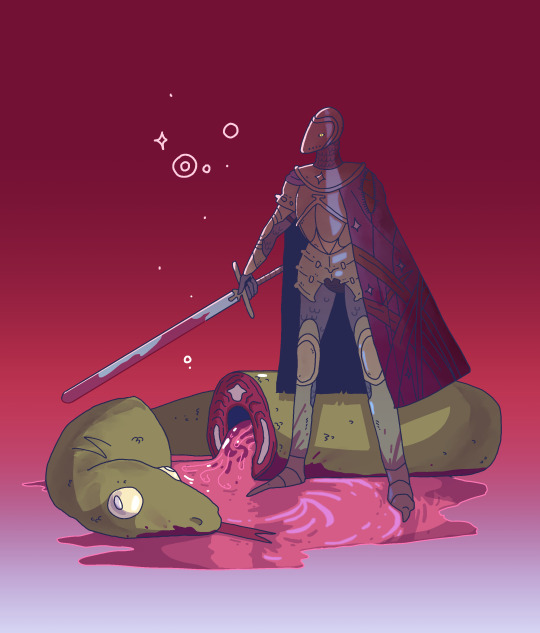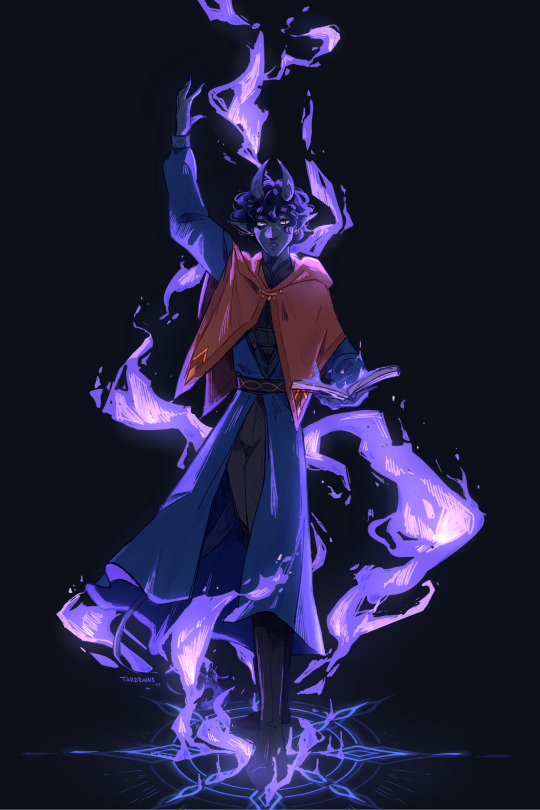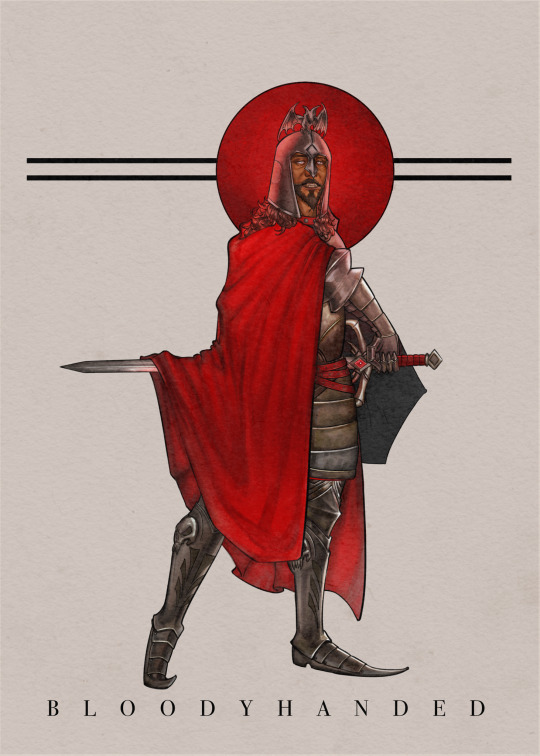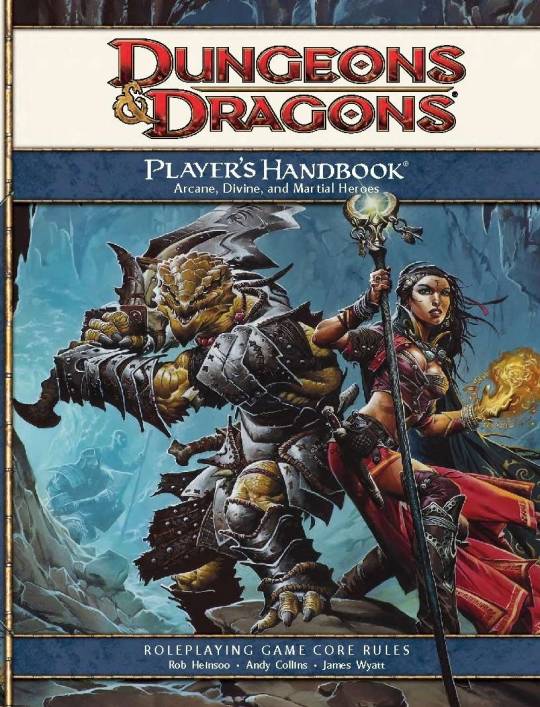#dungeons and dragons 4e
Explore tagged Tumblr posts
Text
D&D and Pathfinder RPers tell me what you think.
#pathfinder#pathfinder 2e#pathfinder 1e#pathfinder monsters#dungeons and dragons 3.5#dungeons and dragons 3.0#Dungeons and Dragons 1e#Dungeons and Dragons 2e#Dungeons and Dragons 4e#Dungeons and Dragons 5e#D&D#advanced dungeons and dragons#d&d monster#d&d 5e#d&d 3.5#d&d homebrew#D&D 1e#D&D 2e#D&D 3.0#D&D 4e#hags
5 notes
·
View notes
Text
Dungeons & Dragons: A Comparison of Selected Editions
🎲🌟 Are you a fan of tabletop RPGs or curious about the evolution of Dungeons & Dragons? 🌟🎲 Dive into our latest blog where we break down the various editions of D&D, comparing and contrasting each one to help you find your favorite! Whether you're a seasoned adventurer or a newcomer to the world of D&D, this comprehensive overview has something for everyone. Discover how each edition brought something unique to the table, from the classic charm of AD&D to the modern innovations of 5E. Plus, learn why D&D 5E's popularity has been both a blessing and a curse for the TTRPG community. 👉 Click the link to read more! And don't miss out on our special feature on the **Dragonbane RPG**—a thrilling tabletop experience that every RPG enthusiast should check out! #DnD #DungeonsAndDragons #TTRPG #TabletopGames #RPG #DragonbaneRPG #FantasyGames #Roleplaying #GamingCommunity #AdventureAwaits Read, share, and let us know which edition of D&D is your favorite! 🎉
Original Dungeons & Dragons Original Dungeons & Dragons Chainmail: Rules for Medieval Miniatures Original Dungeons & Dragons (OD&D), published in 1974, is the first edition of the iconic role-playing game created by Gary Gygax and Dave Arneson. Packaged in a simple “White Box,” this edition laid the groundwork for all future RPGs with its innovative blend of tactical wargaming and…
#best d&d edition#d&d 3.5#d&d 4e#d&d 5e#d&d comparison#d&d editions#d&d evolution#d&d guide#d&d history#d&d overview#d&d review#d&d timeline#Dungeons and Dragons#dungeons and dragons 3.5#dungeons and dragons 4e#dungeons and dragons 5e#dungeons and dragons comparison#dungeons and dragons editions#dungeons and dragons evolution#dungeons and dragons guide#dungeons and dragons history#dungeons and dragons overview#dungeons and dragons review#dungeons and dragons timeline#legion of myth
4 notes
·
View notes
Text
I feel you guys might like 4e version of Bane. He is an evil god, true, but he has good worshippers too! He teaches to master your fear, to never give up even in the face of insurmountable odds and actually let me just show you how he looks

There, this should work
#ttrpg#dnd#dungons and dragons#Dungeons and Dragons 4e#4e#dnd 4e#dnd 5e#Tagging 5e as means of entrapment
1 note
·
View note
Text
Primaries, Secondaries, Structure, and 4e DnD
Talking about Fourth Edition Dungeons & Dragons is challenging at times because I feel like I’m always coming at things from a preemptive crouch. My first draft of this started out describing a problem that people criticized, but realistically speaking, that was 10 years ago and it doesn’t really matter what people think about it now, especially because fundamentally it isn’t an incorrect thing to have noticed.
What I’m going to talk about here is structural form and it’s a thing that 4e has throughout. Honestly, you could make a reasonable model of the development of Dungeons & Dragons throughou
One of the areas where I would say that fourth edition really excels as a tabletop RPG is that its structure is rock solid. It’s not a game with tons of tables in it because most things that needed tables were instead handled by formulas and sometimes those formulas were very simple. This does make it sort of the anti-Rolemaster where, broadly speaking, you are managing a very small amount of information and the game doesn’t do a lot to generate things for you. This structure does mean that there are reliable ways that players can approach information with expectations and assumptions about how the game does work.
To be clear, I like this. It is not necessarily the best way for any game to be, but 4e is an enormous game that relies on its system being modular, familiar, and exclusionary. You know how the game works in a set of fundamental structures, and then you work out from that centre of generalities to your specifics. You don’t need to know how Barbarians work if you’re not playing one, but the fact that Barbarians work like how Wardens work like how Fighters work means that when you do pick up any of the Barbarian pieces, they are pretty familiar. This approach is a form of structuralism, and it’s really useful for making a big complicated thing handleable. Rather than having four or five versions of the same thing (like Spellcasting in 3rd edition), you can have a uniform structure that everyone recognises.
One example of a structural design in 4E is the way the game handles Primary and Secondary Stat needs for each class.
Real quick for anyone not familiar, in most of 4E’s class design, characters were making attack rolls against defenses. There weren’t any saving throws against magical spells being flung around, and for the most part enemies didn’t have a lot of opportunities to avoid things beyond specialized layered defenses like ending stuns or dazes early. You had your Armour Class, your Fortitude Defense, your Reflex Defense, and your Will Defense. This design puts agency on the actor rather than defense posture on the target, and since players are the ones enacting the things the players want, that means the die rolls that matter are the ones they make.
Now, you may not like this, especially if you like fudging die rolls like some kind of a coward I guess, but the point is for now, the fundamental structure of classes in 4E was you were powers were making attack rolls against defenses. Because of that, everyone needed to be good at making attack rolls. This was a break from third edition where it was pretty much expected that attack rolls were only for a very small set of things that were considered attacks (and which were, largely, not very good). If you were a wizard, you could build the whole character as if you never had to make an attack roll. You could, there were spells that did it, but you didn’t have to. There was no inherent assumption wizards would be good at attacking. You would be very likely expecting to meet characters that didn’t have a good attack roll.
A complaint about this design is that because everyone is making attacks, characters all feel the same. This is a reasonable complaint that if you ignore all the things that aren’t making attacks, everyone is only ever making attacks. It is true that this made 4E a game where everyone wanted to be good at connecting and therefore, everyone wanted stats that made you best at hitting. That meant that Wizards all wanted Intelligence, the stat that made you better at hitting with Wizard powers, and Fighters and Barbarians all wanted a good Strength stat because that’s how Fighters and Barbarians hit things more often.
This was, again, a complaint: The system made it so that wizards wanted high Intelligence, and Fighters and Barbarians wanted high Strength. It’s true that if you don’t like this result that this is a reasonable criticism, that this is a thing the game encourages. It’s not a criticism I much care about, mind you.
“Doesn’t this mean every member of a class will have similar stats, and naturally gravitate towards the same best powers?” you might wonder, and no! No, they solved this problem through Secondary stats. Powers came in two flavours; one, powers that only cared about your primary stat, and they were usually pretty decent, solid 8/10 kind of things. But then there were powers that could have some benefit based on your other choices, like a Pact or a Boon or a Style, and those things looked at a stat of yours that was very deliberately not the stat used to make the attack roll. These were commonly referred to as your ‘rider’ abilities, and therefore, that stat effect was the rider on the main ability.
For example, Dishearten was an attack that used Intelligence to hit, dealt damage based on Intelligence, but the penalty it could impose on an enemy’s to-hit was based on your Charisma. To that end, if you did want this power, you might want a good Charisma as well, or, if you already wanted a character with a high Charisma, you might pick this kind of power to reward that build.
There’s another structure that lives parallel here. It’s not as common, but it’s still there; there were some classes that had one secondary stat for their powers, but had two different primary stats for their powers. That meant that the class might approach hitting with stats like Wisdom or Strength, but the followup to that hitting was always going to be (for example) Charisma. This meant that there was a common thread across all members of that class, but it was never their best thing; all Clerics had some people skills, but they might be a holy smiting, mace-swinging Cleric who had people skills, or a laser beam blasting Cleric who had people skills.
4E clerics were so cool.
The other classes that did this in the Player’s Handbook were the Warlock (Charisma and Constitution) and the Paladin (Charisma and Strength). The Warlock was a bit of an orphan child at the best of times, but the Paladin was so well serviced and ate so well that it wound up with multiple fully-fledged ‘standard package’ builds you could pursue with plenty of feat support under the names of Straladin (Strength Paladin), Chaladin (Charisma Paladin) or Baladin (Balanced Paladin). The Ranger also had the opportunity to be a Strength-based or Dexterity-based attacker, though the powers were mostly all the same powers, with ‘Strength or Dexterity vs AC’ kind of attack rolls.
Sometimes for some classes that weren’t super well developed, this meant that you effectively had one primary stat and two secondary stats. There aren’t any I can find that only have one secondary stat, even the most malnourished classes I found like the Vampire have two, and some classes like the Fighter and the Warden seem to have almost every possible stat supported as a secondary stat. Your best stat was probably going to be the one that you used to hit with and your second best stat was going to be the one that gave you secondary effects you liked, which meant that most of the characters in a particular form would have similar stats and probably express a similar-ish character. If you were a wizard who liked moving things around, you probably were very intelligent and pretty wise because those were the two stats you wanted the most.
Now this does create variety within a class, but you can probably just complain it kicks the can down the road. After all, if you’re playing a Bard, are you the Charisma-Intelligence Bard, the Charisma-Wisdom Bard, or the best Bard? It’s still narrowing options.
Thing is, to me, complaining about this seems dumb when I point out the Fighter. Because everyone seems to think it’s okay that all fighters are strong and hit things hard, because that’s what being a Fighter is. Suddenly that is okay when we’re talking about limiting the options of the poor Fighter, who had people back in 4e complaining their builds were too good, too interesting, and they did too much cool stuff, when the players would much rather than two combat options, have one.
Oh and fourh the May be with you or whatever.
Check it out on PRESS.exe to see it with images and links!
71 notes
·
View notes
Text

Ermengard Helvithra, Bane of Serpents
#my art#digital art#fantasy art#art#oc#fantasy#dnd art#high elf#eldritch knight#serpent#dungeons and dragons art#dnd#dungeons and dragon#4e
114 notes
·
View notes
Text

this is what ilta's enemies see moments before being blasted with a fireball and a few extra fire bolts for good measure
#my art#my ocs#original character#dnd#character design#dungeons and dragons#dnd 4e#d&d#d&d art#d&d character#dnd pc#dnd 5e#tiefling#wizard#dnd wizard#fantasy#fantasy art#fantasy illustration
33 notes
·
View notes
Text

Sword & shield Kas and with a bat on his nasal helmet because I want to give him that

#I like his sword n shield fighting style in 4e#knights should always use sword n shield okay#kas the bloody handed#kas the betrayer#Greyhawk#dnd#dungeon and dragons#mtart#vecna: eve of ruin#eve of ruin#veor#vampire#vecna eve of ruin#Ravenloft
50 notes
·
View notes
Text

The Void Saga on Critical Hit
From: https://www.tumblr.com/el-tlatoani-de-barrio/778036304244031488
15 notes
·
View notes
Text

Draegloths were half-demon, half-drow monstrosities. They were the progeny of coupling between a glabrezu and a newly ordained high priestess of the drow goddess Lolth.
“These drow house pets are as graceful and nimble as Waterdhavian stage dancers. Only they're slayers and enforcers, four-armed brutes built like an ogre. Life isn't fair.” — Volo
Draegloths came in several different forms, differentiated by a combination of gender and the species of their mother. The most common were male draegloths born to drow mothers; less common were female draegloths of drow heritage, who were known as "Favored Ones." Rarest still were draegloths that spawned when drider blood was mingled with that of demons via foul rituals; these were known as "Abominations."
Male draegloths were 7.5–8.0 feet (2.28–2.44 meters) tall. They had four arms: large claws on the upper arms and humanoid hands on the lower arms. Their faces were stretched so that they resembled those of dogs. Their skin was black and covered in a fine coat of white fur. They had a yellow-whitish mane of hair on their head.
Female draegloths were as tall as their brothers, but favored their drow ancestry; they looked mostly like a female drow, save for having two pairs of drow-like arms and a distinctly lupine cast to their features. Their fingernails and toenails were sharp and claw-like, but not so large as to interfere with spellcasting or delicate work.
Draegloth Abominations were the most bestial-looking of the draegloths. Their features included wicked claws, spider-like legs, and gnashing teeth. They had the ability to secrete webbing, which they used to tether foes and pull them into close quarters to be torn apart.
Draegloths were immune to poisons, as well as sleep-inducing spells and effects, and they were resistant to most elemental energy.
Draegloths were often seen as a sign of favor from Lolth. They were sacred creatures to the Lolthites and were usually treated with respect. Draegloths were perhaps the only variety of half-fiend that was created regularly and intentionally by a mortal race.
Female draegloths, due to their rarity, their greater intelligence, and their gender, were regarded with much more favor than their male counterparts in drow society, as evidenced by their title of "Favored Ones". Female draegloths were always adopted by the Church of Lolth and brought up as clerics to the Spider Goddess. Some draegloths trained as wizards.
Draegloth abominations had no society. They were uncontrollable monsters, so crazed for blood that even drow society couldn't tolerate them in its midst. Consequently, the usual practice was that soon after an abomination was born, the draegloth was ceremonially gifted to Lolth by being sent through a portal to the Demonweb Pits, where it became one of the many fiendish predators roaming that plane. When this did not happen, the abomination invariably brought ruin to its mother and all drow around it.
In the drow city of Menzoberranzan, part of the annual graduation ceremony of the Arach-Tinilith academy was the summoning of a glabrezu and the attempt to produce a draegloth. This succeeded about once a decade, and nearly always precipitated conflict as the drow house "blessed" with the half-fiend moved to strike against its rivals.
During the Silence of Lolth over 1372/1373 DR, some draegloths, formerly unquestionably loyal to the matriarchs, went off on their own, abandoning or even betraying their mothers and demanding equal status.
Source: https://forgottenrealms.fandom.com/wiki/Draegloth
24 notes
·
View notes
Text
4e's "Heroes of the Fallen Lands" contains a bit of text in the wizard section whose wider implications I do not believe were fully considered.

You heard it here first! (Several years after publication!) In 4e D&D, it is assumed that wizard apprentices regularly brainwash both their teachers and each other.
31 notes
·
View notes
Text


Petra, human fighter (4e)
7 notes
·
View notes
Text
Star Spawn for Pathfinder 1st Ed RPG
I been wanting to play with these monsters since I saw them in Dungeons and Dragons 4th edition. But sadly 5th ed D&D didn't even bother updating them and used another race of monsters as Star Spawn. And with no true conversion from 4th ed to either 5th ed D&D or Pathfinder 1st ed or even revered conversion back to 3.5 D&D I was pretty much out of luck. Until I started watching how to use Chat GPT for your D&D games. So since I am a Pathfinder 1ed/D&D 3.5 player and DM I figure what the hell and see what I got. Well.... I got what I wanted FINALY! Not only all the original Star Spawn stats that work for Pathfinder 1st ed, but a working Star Spawn subtype for the Pathfinder game just in case I or anyone else wanted to make new types of Star Spawn.
So my I present to you Star Spawn for the Pathfinder 1st Edition RPG PDF.
STAR SPAWN PDF
#pathfinder#pathfinder 1e#pathfinder monsters#dungeons and dragons 3.5#dungeons and dragons 4e#d&d monster#d&d#d&d 3.5#d&d 4e#star spawn#star spawn 4e#star spawn dungeons and dragons#dungeons and dragons star spawn#dungeons and dragons 4e star spawn#dungeons and dragons 3.5 star spawn#d&d 4e star spawn#pathfinder star spawn#star spawn pathfinder
1 note
·
View note
Text








#dungeons and dragons#ttrpg#rpgs#dungeonsanddragons#d&d#thoughts#tumblr polls#my polls#polls#poll time#dnd#dnd5e#dungeons & dragons#od&d#D&D basic set#Basic D&D#ad&d#1e#ad&d 2e#advanced dungeons & dragons#d&d 2e#d&d 3.5#D&D 3e#d&d 4e#d&d 5e#d&d 5th edition#adnd#poll#random polls#tumblr poll
18 notes
·
View notes
Text
do you ever homebrew a bit too much to the point that the game turns into basements and lizards?
#am i a bad dm? yes#but! *stares at the handbooks* i ain't reading all that#dnd#d&d#d&d memes#dnd memes#dungeons and dragons#ad&d 2e#dnd 5e homebrew#dnd 4e#dnd 5e#d&d 4e#d&d 5e
13 notes
·
View notes
Text
4e: The Pinball Wizard
Back in the heydays of the 4th edition community being a community that all met on a single forum and shared a common lexicon and all that, there were phrases, truisms, slang and tropes we recognised and used to speed our way through conversations. This was true of 3rd edition too, since the community was actually, broadly speaking, the same thing, but that community kind of uprooted itself and moved on to other places, while the 4th edition remnant seems to have not really coalesced in a subsequent form. We don’t really have a 1d4chan or Brilliant Gameologists or deeply intimidating Pathfinder Subreddit as places to scare people off, and instead it’s stuff like…
Well, this blog post might get shared on the subreddit. Hi reddit! I like you even if we don’t agree about Blackguards!
Anyway, thing is, there are things that now have no meaning except their place in 4th edition conversations, and are functionally un-googleable because they’re very generic ways of just using words, or maybe, were named after something else. Back in City of Heroes there was a powerful supergroup known as the Green Machine, that was entirely team-buffing healers that refused to heal, and that’s not a term you can search for meaningfully. Another group that existed and that shares its title with today’s subject was a group of kinetics, where everyone could use powers to make everyone else fire off at super speed, showing you don’t need good powers if you can fire off your best powers every second.
They called themselves the Pinball Wizards, and now, if you go look for what that means in 4th edition D&D you kinda find nothing.
Here’s the story of one of the more distinct power level errata of D&D 4th edition, where in 2011, a single sweeping change to the way the rules worked destroyed a strategy and in the process brought something ridiculous down to merely really good.
This build was a combination of two basic parts, which were well and strictly defined under 4th edition rules. The first is zones. A zone is an effect, made by a power with the ‘zone’ keyword so you knew where to look for it, that looks at that area for some reason. Some zones are used for things like a healing aura, or a space that a character can move around in freely, but very commonly, a zone is used to represent an effect that’s bad that lasts. This can be a bunch of falling shards of glass, a cloud of toxic venom that hovers in a space, or a ground teeming with sharp, jagged vines on thorns.
Zones are extremely cool, make no mistake, and they tend to fall into the toolkit of the Controller. Controllers want to deprive enemies of actions, and zones are a great way to give enemies a bad choice: Stay in an area to do something they want to do, or spend actions getting out of it. Since zones do a good job of representing effects like rings of fire, or clouds of poison, or raining ice, it’s stuff that hits the wizardy feeling of editions past.
The other part of this is forced movement. 4th edition had a family of these effects known by their more specific names of push pull slide, but these are ways to change where enemies are positioned and everyone who complains about fighters in 4th edition is usually complaining about these and they are cowards. These effects show up everywhere, but undeniably, if you’re looking at the people who will do the most of them, you want controllers.
The build that worked out of this was known as the Pinball Wizard. You played a Wizard who used one of a number of long-lasting powers that created a zone that did something dangerous when someone entered it. Then you used your other powers to slide something in and out of that zone over and over again. Wizards got more than a few powers that did slides, and they got access to items and feats that improved their slides. You could use a slide effect to turn two squares of slide movement (and we’re talking like, 4-8 squares for builds that are trying) into like, 40 damage.
At level 2, when tanks are happy to have 40 hit points.
Anyway, you might be thinking the sensible solution is to make it so that these zone powers are limited in how often they can have their effect – and it kinda makes sense, narratively, in the context of the world, right? Like, an enemy or person isn’t going to breathe more if they run back and forth through a poison cloud.
In 2011, Wizards released an update to the compendium that added that rules information to every single damaging zone power in the game, with a note of the when, and an article explaining why they did it. It was a perfectly reasonable rules update made through a digital system they had and realistically speaking, the only thing to mourn is that there’s now no good reason to ever let a player get away with this use of these powers together, because it’s pretty silly.
The system that was left after this change was obviously a better system. It had a clear, specific template that it could use thereafter and while it did lose some edge cases, it was implemented thoroughly and comprehensively in a way 3rd edition almost never managed to execute. This was because of a central control system, the compendium, but it also spoke to a problem that a game normally about disconnecting and engaging with a very material play space was going to have to confront head-on.
Basically: This kind of errata existed in the rules, sure, and if you download a rules compendium, every power that can be changed mentions the 2011 change. But the books don’t. The books still have the rules change and to learn how the game works, you have to know it. Or you have to use a digital compendium, which presents a new problem for a game that is meant to work with paper and dice.
These were inevitable evolutions of technology and they interest me because they kinda present problems and solutions at scale. The actual problem of a wizard stacking a bunch of redundant effects together to kick an enemy through the boundary of their zones as a single incident was not a meaningful problem to a table. If it’s a problem, it’s a problem that has an administrative option to work with – the Dungeonmaster can look at it, and decide it’s too good and talk to the players about it. That problem is solvable almost instantly if everyone in the group and game has a good relationship and respects the DM.
But if you made the game, you don’t have a problem that can be solved on the spot. You have a problem of all the players, in a communal space, who bring it up and ask if it makes sense and consult with one another and now you have the problem that looks like at scale your product has a flaw and you need to address it to make that flaw not look like you don’t know what you’re talking about. Oh, what makes a good game is important here, it isn’t not important.
It is neither a good thing nor a bad thing.
It is a thing that few games get, not really, unless they’re very big, and trying to do a lot. It’s barely something that even the next tier down of games need to care about. Errata happens, people care about making the books better. But most people don’t have a comprehensive central database where they can update all the powers that use a particular wording.
Check it out on PRESS.exe to see it with images and links!
86 notes
·
View notes
Text
#dungeons and dragons polls#dungeons and dragons#old school d&d#d&d#dnd#ad&d 1e#dnd1e#ad&d 2e#dnd2e#d&d 3.5#dnd 3e#dnd 3.5#d&d 4e#dnd 4e#d&d 5th edition#d&d 5e#dnd5e#dnd 5th edition#osr#old school renaissance#ttrpg#ad&d#ttrpg community#d&d polls#dnd poll#ttrpg polls#fantasy rpg#rpg
22 notes
·
View notes